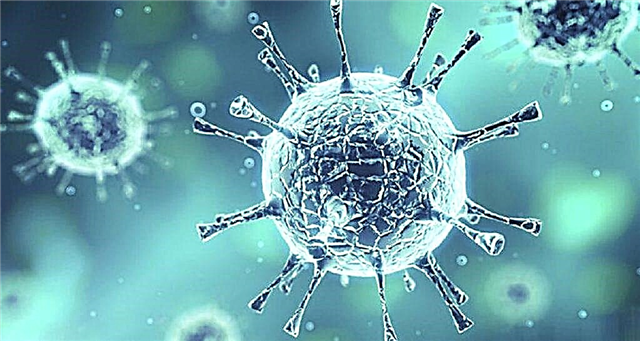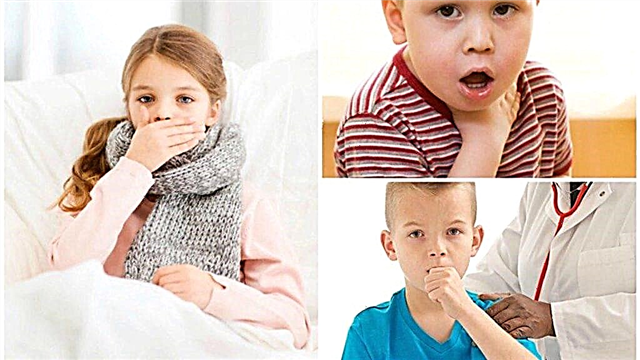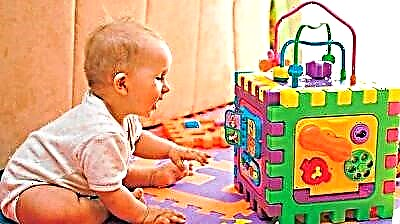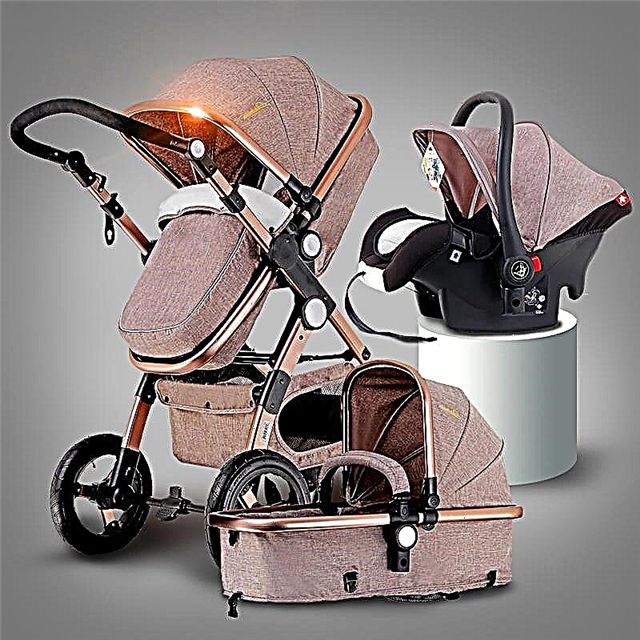Which parent has not encountered problems caused by a respiratory infection in a child? Complaints about coughing are one of the most common reasons for visiting a pediatrician. But this common symptom can indicate various diseases, including inflammation of the trachea. It is useful for parents to know how to identify tracheitis in children, the symptoms and treatment of this disease.
Let's understand the concepts
Tracheitis in a child is a disease that manifests itself in inflammation of the tracheal mucosa. The disease rarely occurs in isolation, in most cases the disease is combined with a runny nose, sore throat, damage to the larynx, bronchi.
It can be noted that all infectious diseases end with the suffix "it", this indicates an inflammatory process. The root of the word means where the pathology is localized, for example, laryngitis - inflammation of the larynx, larynx, etc.
Seasonality is noted in the appearance of tracheitis - the disease often occurs in the autumn and spring periods. The disease affects mostly babies under 3 years old, which is associated with the immaturity of the immune system, which is unable to resist bacteria and viruses, as well as with the anatomical features of the structure of the airways in babies.
The trachea is an extension of the child's larynx and passes into the bronchi. In children, it has a funnel-shaped shape and consists of cartilaginous half-rings, which are connected behind by a fibrous membrane (in contrast to the denser elastic plate in adults). The increased softness of the cartilage can lead to collapse of the trachea and larynx and the occurrence of stridor breathing. In addition, the airways of babies are narrow and tend to develop edema of the mucous membrane.

Causes of the disease in children
There are many reasons for inflammation of the tracheal mucosa, the main of which are the effect of microorganisms, physical or chemical factors on it.
Infectious causes
- viral infection.
Viral infectious agents are considered the main "culprits" of tracheitis in children. These non-cellular structures are able to penetrate the cells of the mucous membrane of the respiratory tract. While actively multiplying, viruses cause swelling and inflammation, and increased production of sputum. In response to this, nerve endings are irritated and coughing occurs as a defense mechanism. Among non-cellular infectious agents, tracheitis is most often caused by influenza and parainfluenza viruses, respiratory syncytial and adenovirus, and others;
- bacteria.
The second most common are bacterial tracheitis caused by staphylococcus and streptococcus, Haemophilus influenzae and other microorganisms. Often, bacterial complications appear after a viral infection, since viruses have the ability to reduce the baby's immunity. A weakened body becomes more susceptible to opportunistic bacteria, exacerbations of chronic diseases appear.
Tracheitis often has a mixed, viral-bacterial etiology. And the infectious process proceeds with the phenomena of laryngitis or bronchitis;

- protozoa.
These microorganisms occupy a niche between viruses and bacteria. They do not have their own cell wall and can only exist within the host cells. Among the protozoa that cause tracheitis, it is worth noting mycoplasma and chlamydia. The presence of atypical pathogens may indicate a tendency to chronicity of the process, the ineffectiveness of "conventional" methods of treatment, antibiotics, the appearance of pneumonia;
- mushrooms.
Cases of fungal infection of the trachea are very rare in pediatric practice. Inflammation of the mucous membrane caused by candidiasis, aspergillosis, actinomycosis may indicate serious problems with the immune system in the child;
- childhood infections.
Some infectious diseases characteristic of childhood (measles, diphtheria, scarlet fever, whooping cough) occur with symptoms of tracheitis. Although this symptom is not the main one, inflammation of the tracheal mucosa is often observed in babies.
Non-infectious causes
- non-compliance with the hygienic standards of the air inhaled by the child.
When a baby inhales dry, hot or too cold air, irritation of the mucous membrane of the respiratory tract occurs and the development of inflammation. The effects of chemicals - varnishes, paints, household chemicals, affect the health of the crumbs especially unfavorably;
- smoking of parents, passive inhalation of tobacco smoke by a child;
- allergic reasons.
According to the time of occurrence, the ailment is divided into acute tracheitis in a child and chronic, each of them has its own special clinical manifestations.

The main symptoms of acute tracheitis
Common manifestations
Since tracheitis in most cases is a consequence of a viral infection, the manifestations of the disease are accompanied by signs of intoxication, weakness, drowsiness, and an increase in temperature to 38 - 39⁰C. The kid refuses to eat; during the examination, the doctor notices enlarged lymph nodes. Very rarely, tracheitis occurs in isolation, usually the disease begins with a slight runny nose, pain and sore throat, coughing. Then cough comes first as the main symptom of tracheitis.
Non-infectious tracheitis is not characterized by the phenomenon of severe intoxication, a significant increase in temperature. In acute allergic tracheitis, there is a connection between cough and contact with a sensitizing substance.

Specific cough
A dry, paroxysmal cough becomes stronger and torments the child at night, when the baby is in a horizontal position for a long time. Sleep disturbance only worsens the overall health of the baby, the baby wakes up weak, "broken".
The peculiarity of cough with tracheitis in its low timbre, parents often describe this symptom "as if in a pipe."
In the early days, coughing attacks occur quite often and can last from several minutes to an hour, sometimes a debilitating cough ends with vomiting. A sudden change in air temperature can provoke an attack, for example, if the baby is taken out for a walk. Loud laughter, crying, excitement can also "trigger" the defense mechanism, and psychoemotional stress, fear prevent it from fading.
In the first days, there is practically no sputum when coughing, after 3 - 4 days, with proper treatment, coughing attacks disturb the baby less. The reflex act becomes less painful, painful, phlegm begins to separate.
The appearance of a viscous, purulent sputum indicates the addition of a bacterial infection. This condition requires medical advice and the appointment of rational therapy.

Chest pain
Irritation of the mucous membrane when coughing leads to the development of painful sensations along the trachea. The kid complains of pain behind the sternum, which intensifies after a coughing fit. Sometimes soreness occurs in the interscapular region.
Respiratory failure phenomena
During an attack, you can notice the active participation of the auxiliary muscles, intercostal muscles in the act of breathing. The kid reflexively tries to breathe more shallowly and often, so as not to provoke a new attack of coughing.
Associated symptoms
The inflammatory process quickly covers the child's respiratory tract, and the manifestations of respiratory failure in tracheitis worsen difficult nasal breathing, damage to the larynx and bronchi. To understand which of the parts of the respiratory system is predominant in the baby, it is worth understanding the features of the clinical manifestations.
- laryngitis.
Inflammation of the larynx, subglottic space and vocal cords with tracheitis is a very common and dangerous condition for children. Laryngotracheitis is characterized by pronounced edema and accumulation of exudate in the vocal cords.
Hoarseness, noisy breathing, difficulty breathing, "barking" cough are the main signs of inflammation of the larynx in a baby. This condition is especially dangerous for children under 3 years old, as it can lead to the appearance of false croup (narrowing and stenosis of the larynx, with the development of suffocation). Having noticed dangerous symptoms, parents should immediately consult a doctor, since the phenomena of stenosing laryngotracheitis are aggravated at night;
- bronchitis.
With inflammation of the bronchi, the symptoms of the disease are similar to the manifestations of tracheitis, but the disease proceeds with more pronounced symptoms of intoxication. During auscultation, the doctor notes the presence of multiple dry or wet wheezing, sputum with inflammation of the bronchi is released much more than with tracheitis. Specialists call the combination of inflammation of the trachea and bronchi tracheobronchitis;
- pneumonia.
The clinical picture characteristic of pneumonia makes it easy to distinguish this serious disease. But sometimes, with oligosymptomatic inflammation, atypical forms of pneumonia, the disease can proceed for a long time and manifest itself by coughing resembling tracheitis.
Features of chronic inflammation of the trachea in babies
The development of chronic tracheitis occurs with improper treatment of an acute illness. The prerequisites for a long course of the disease are chronic infections in the baby - caries, sinusitis, tonsillitis and others. Also, an ailment can be caused by prolonged contact with an allergen.
Typical clinical manifestations of the disease become less pronounced, the body of the crumbs gets used to constant irritation of the mucous membrane. The child constantly coughs, sometimes there are bouts of coughing, sore throat. Symptoms prevail in the daytime, and there is also increased fatigue and hoarseness in the baby.
The features of the cough depend on the age of the child. In infants up to six months, the cough reflex is poorly developed, and an unproductive cough is often combined with vomiting or regurgitation. Due to the insufficient development of the respiratory muscles, it is difficult for preschool children to cope with expectoration, so the risk of complications in this group is high. Older children are characterized by increased secretion of mucus, their cough is more productive, with a lot of phlegm.

Diagnosis of tracheitis in children
- interview.
When talking with the parents, the doctor specifies what symptoms preceded the onset of cough in the child, whether there was contact with an infectious patient. Physical factors that provoke an attack in a baby are of great importance in the diagnosis of tracheitis. Older children can tell themselves what kind of complaints they have;
- physical examination.
When examining a baby, the doctor pays attention to the color of the skin, the function of external respiration, determines the nature of the cough, notices the work of the auxiliary muscles, intercostal muscles during breathing. With percussion, tapping of the lungs, there will be no changes.
During auscultation with a phonendoscope, the doctor will be able to hear dry rales over the tracheal region. In the case of a combined inflammation of the bronchi and trachea, various dry and moist rales are determined over the entire surface of the bronchial tree;

- laboratory research.
General clinical tests can confirm the presence of inflammation in the body, help determine the cause of the disease. An increased number of lymphocytes in a clinical blood test indicates a viral infection in a baby. In the case of bacterial etiology of the disease, the blood formula shifts "to the left" - the number of leukocytes, stab neutrophils, and the erythrocyte sedimentation rate increase.
An increase in the number of eosinophils may indicate an allergic nature of the disease. Allergy tests will help to confirm the increased sensitivity to certain substances;
- bacteriological methods.
Sometimes, to clarify the cause of the disease, identify the causative agent of the infection and prescribe rational therapy, a bacteriological examination of sputum is carried out. The disadvantages of the method are the laboriousness of collecting exudate from children and the prolonged analysis. In case of concomitant diseases of the nasopharynx, a study of swabs from the nose and throat is carried out;
- instrumental examination.
To exclude the phenomenon of bronchitis and pneumonia, the baby undergoes a chest x-ray. Visually assess the degree of damage to the mucous membrane using laryngotracheoscopy and tracheobronchoscopy. With these examination methods, a special flexible endoscope is inserted into the baby's airways. The device is equipped with a light source for a good examination of the state of the larynx, trachea and bronchi from the inside.
Although endoscopic examinations help to accurately identify the disease, their use in children is limited due to their high trauma. The use of techniques is justified only in case of suspicion of a foreign body entering the respiratory tract, congenital narrowing of the larynx or the presence of fistulas;
- consultation of specialists.
For an accurate diagnosis, you may need to consult an allergist, otolaryngologist, pediatric pulmonologist.

Treatment of tracheitis in a child
Creation of optimal environmental conditions
A lot of trouble can be avoided by following simple rules. Parents need to create conditions under which the baby's body can quickly cope with the infection. It is imperative to maintain the temperature in the room within 20 ° C and the air humidity 40 - 60%. Breathing dry hot air inevitably leads to drying out of the delicate mucous membrane, the addition of a bacterial infection and the development of complications - false croup, bronchospasm, pneumonia. According to Dr. Komarovsky, creating a comfortable temperature and humidity for the baby is the main way to prevent serious consequences of the disease.
Drinking regime
Do not forget that the viscosity of sputum directly depends on the rheorgological properties of the blood. Since the disease is often accompanied by an increased body temperature, additional fluid loss occurs. Drinking a warm, plentiful drink of your child's favorite drink will help replenish water balance and improve sputum flow.

Fighting cough
Tracheitis rarely occurs in isolation, and the nature of the cough may change over time. Therefore, the choice of a drug to eliminate an unpleasant symptom should be carried out by a doctor after a careful examination and physical examination of the baby.
With a dry, obsessive, painful cough that disrupts the baby's sleep and appetite, doctors recommend using syrups with antitussive action (Herbion Plantain Syrup, Bronholitin, Sinekod and others).
In the event of a cough with thick, hard expectorated sputum, doctors prescribe mucolytic agents. These substances are capable of thinning thick mucus and making it easier for secretions to pass from the body. These include drugs based on ambroxol, guaifenesin, acetylcysteine.
Expectorants help to remove the resulting phlegm by stimulating the work of the muscles of the bronchi and ciliated epithelium. Many herbal preparations belong to this group - licorice root, thermopsis extract, essential oils and other products.
There are many combination medications available that thin phlegm and help clear it out.But the use of medicines that increase the volume of discharge, together with antitussives, is dangerous, since it leads to the development of serious complications. Therefore, it is better to entrust the choice of medication to eliminate cough to a professional.
A good therapeutic effect is provided by the use of drugs in the form of inhalation. This method allows you to "bring" an important medication directly to the site of inflammation and reduce the risk of adverse reactions from treatment. When performing inhalations, the advantage of nebulizer therapy, the use of compressor and ultrasonic devices is given.
Fight against the pathogen
The question of the need to use antiviral agents and drugs that stimulate the immune processes in the body remains controversial. Often, interferons, combined homeopathic medicines or substances with direct antiviral action are prescribed for the treatment of tracheitis, but their effectiveness is often not proven.
Antimicrobial agents are prescribed in cases of signs of bacterial infection: the presence of thick, purulent sputum, deterioration of the general condition of the child, corresponding to the blood picture. Antibiotics from different groups are used - penicillins, cephalosporins, macrolides. The choice of the necessary medication is made by the doctor, taking into account all the characteristics of the child's history and the clinical picture of the disease.
Antipyretic drugs
If the baby's body temperature rises above 38 - 38.5 ° C, and the general condition of the baby worsens, you need to use anti-inflammatory drugs based on ibuprofen and paracetamol.
In case of a risk of developing a false croup in a child, the appearance of respiratory failure, it is worth giving antipyretic drugs before the arrival of an ambulance. Babies with a history of febrile seizures need to "bring down" the temperature if it exceeds 37.5 ° C.
Symptomatic treatment
Sometimes shortness of breath associated with edema of the mucous membrane of the larynx and trachea is combined with a runny nose. In such cases, it is worth instilling the nose of the crumbs with vasoconstrictor drops, this will ease the baby's condition. Antiallergic drugs will help reduce edema syndrome and prevent hypersensitivity reactions in allergy-prone children.
Distracting procedures
Hot foot baths, compresses, mustard plasters, chest rubbing are widely used at home. When applying these methods, you need to remember to comply with safety rules. You should never use warming procedures if the baby has a fever or there are wounds, pustular rashes, neoplasms on the skin of the crumbs.

Forecast and prevention of tracheitis in children
Inflammation of the trachea has a favorable prognosis, with rational treatment, complications do not develop, and the symptoms of the disease completely disappear after 10-14 days. Disease prevention includes the general principles of preventing respiratory diseases in a baby: improving the body's resistance, creating optimal conditions for the functioning of the respiratory system, avoiding contact with infectious patients.
Conclusions
A baby's cough is one of the most common complaints of parents when they see a pediatrician. This symptom may indicate damage to various parts of the respiratory system, including the trachea. Tracheitis in children is a frequent and, in most cases, mild illness. The danger is its combination with laryngitis or bronchitis, the development of complications. It is important for parents to understand when to see a doctor and how to create optimal conditions for the baby's recovery. Then the cough will not become a faithful companion of the child, and recovery will not be long in coming.



